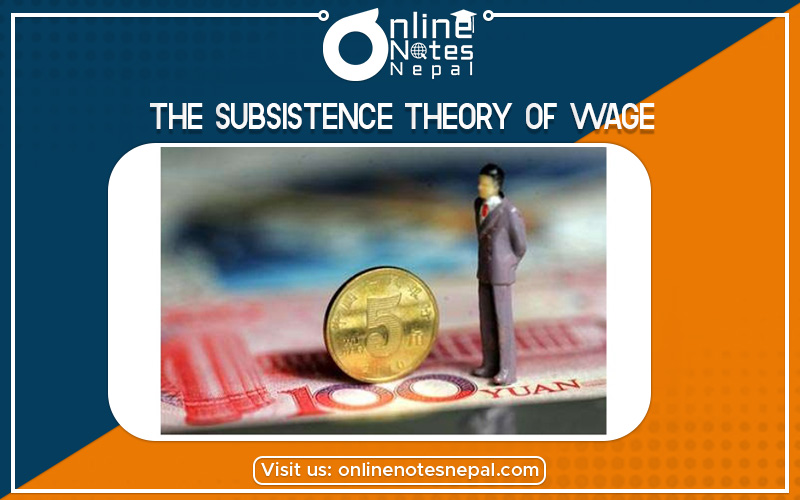Published by: sadikshya
Published date: 06 Jul 2021

The subsistence theory of wages was first propounded by French economist Francine Quesnay in the 18th century; David Ricardo later explained it systematically and scientifically. According to this theory, the wage of the workers is determined at their subsistence level. Here the wage of subsistence level denotes that level of wage which is just sufficient to fulfil the basic needs of works and their families. This theory is based on the following assumptions.
Based on the above assumptions Ricardo concludes that the subsistence level of wage remains constant and rigidity fixed in the long run. If labourers are given higher wages then the subsistence level they will become better off and they are increased to many more wife and to have many children, this will increase the supply of labour in the country. The increases in labour supply increase competition among workers and as a wage rate come back to the subsistence level.
Similarly, if workers are given wages below the subsistence level they would be unable to survive. This causes starvation disease malnutrition this will reduces the supply of labours. The reduce the labour supply leads to a situation in which demand for labour exceeds the supply of labour and finally wage rate increases up to the subsistence level. Hence wage rate may fluctuate above or below. Subsistence level in the short run but it is stable at the subsistence level in the long run.